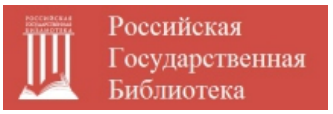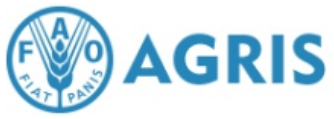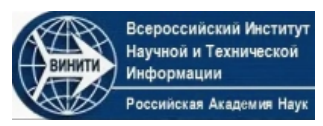Features of growth, development and yield formation of coriander varieties
Z.A. Shaova, V.N. Kosarev, M.S. Galicheva
Upload the full text
Abstract: The article examines the growth, development, and yield formation of various coriander varieties cultivated in the conditions of the Giaginsky district of the Republic of Adygea. A comparative analysis of the agroclimatic conditions of the region affecting the vegetation period of plants was conducted, and the adaptive capabilities of selected varieties to local soil and climatic conditions were studied. Particular attention is paid to factors determining coriander productivity, such as sowing dates, irrigation regime, soil fertilization, and weed control. The results of field experiments demonstrating differences in growth rates, vegetative mass development, and seed yield formation among the studied varieties are presented. Conclusions are drawn about the prospects for growing certain coriander varieties in this region, and recommendations are made to optimize agronomic practices to increase crop yields. In 2019–2021, research on the cultivation techniques of the coriander varieties Silaсh and Yantar was carried out in the Giaginsky district of the Republic of Adygea. Seeding norms and sowing dates influencing fruit yield and quality were examined. Analysis of fruit diameter revealed differences between the varieties: Silaсh fruits measured 3.4–3.6 mm, while Yantar fruits reached 3.8–4.0 mm. Fruit color also varied: Silaсh had a brownish-golden hue, whereas Yantar exhibited a dark-brown shade. In terms of essential oil content, Yantar surpassed Silaсh, with 2.2% versus 1.9%. The average fruit yield of Silaсh was higher at 3.0 t/ha compared to 2.5 t/ha for Yantar. Both varieties demonstrated significant green biomass yields, but Yantar showed greater productivity (21.29 t/ha) than Silaсh (12.33 t/ha).
Keywords: coriander, variety, fruits, sowing time, yield, essential oil, economic efficiency, energy assessment, Republic of Adygea, adaptability
For citation. Shaova Z.A., Kosarev V.N., Galicheva M.S. Features of growth, development and yield formation of coriander varieties. News of the Kabardino-Balkarian Scientific Center of RAS. 2025. Vol. 27. No. 2. Pp. 139–149. DOI: 10.35330/1991-6639-2025-27-2-139-149
References
- Kačániová M., Galovičová L., Ivanišová E. et al. Antioxidant, antimicrobial and antibiofilm activity of coriander (Coriandrum sativum L.) essential oil for its application in foods. Foods. 2020. No. 9(3). Pp. 282–301. DOI: https://doi.org/10.3390/foods9030282
- Karomatov I.D. Coriander as remedy. Biologiya i integrativnaya meditsina [Biology and integrative medicine]. 2016. No. 5. Pp. 122–142. URL: https://elibrary.ru/item.asp?id=27638595. EDN: XGVEYV. (In Russian)
- Tsitsilin A.N., Kovalev N.I., Korotkikh I.N. et al. Metodika issledovaniy pri introduktsii lekarstvennykh i efirnomaslichnykh rasteniy [Research methodology during the introduction of medicinal and essential oil plants]. Moscow: FGBNU VILAR, 2022. 64 p. EDN: ELWOOS. (In Russian)
- Prakhova T.Ya. Ecological aspects of the productivity of nigella varieties in the conditions of the Middle Volga region. Rossiyskaya sel’skokhozyaystvennaya nauka [Russian Agricultural Sciences]. 2022. No. 2. Pp. 36–40. DOI: 10.31857/S2500262722020077. (In Russian)
- Khmelinskaya T.V., Smolenskaya A.E., Solovyeva A.E. Complex biochemical characteristics of Coriandrum sativum L. Trudy po prikladnoy botanike, genetike i selektsii [Proceedings on applied botany, genetics and breeding]. 2021. Vol. 182. No. 1. Pp. 80–90. DOI: 10.30901/2227-8834-2021-1-80-90. (In Russian)
- Duwal A., Nepal A., Luitel S. et al. Evaluation of coriander (Coriandrum sativum L.) varieties for growth and yield parameters. Nepalese Journal of Agricultural Sciences. Vol. 18. Pp. 36–46. URL: https://www.researchgate.net/publication/337560937
- Stepanova N.Yu. Agrobiological assessment of coriander varieties in the Leningrad region. Izvestiya Sankt-Peterburgskogo gosudarstvennogo agrarnogo universiteta [Izvestiya Saint-Petersburg State Agrarian University]. 2021. No. 4(65). Pp. 20–27. DOI: 10.24412/2078-1318-2021-4-20-27. (In Russian)
- Nikolaichenko N., Strizhkov N., Azizov Z. et al. The impact of progressive cultivation technology on the productivity of coriander on chernozems of the Lower Volga region. BIO Web of Conferences. 2021. No. 37. P. 00141. DOI: 10.1051/bioconf/20213700141
- Silva M., Soares T., Gheyi H. et al. Hydroponic cultivation of coriander using fresh and brackish waters with different temperatures of the nutrient solution. Engenharia Agrícola. 2020. Vol. 40. No. 6. Pp. 674–683. DOI: 10.1590/1809-4430-eng.agric.v40n6p674-683/2020
- Lukyanov I.A. Efiromaslichnyye kul’tury [Essential oil crops. Coriander]. Moscow: Izdatel’stvo sel’skokhozyaystvennoy literatury, 1953. 243 p. (In Russian)
- Kincharov A.I., Demina E.A., Kincharova M.N. et al. Methodology for assessing the agroecological adaptability of genotypes under global climate warming. Trudy po prikladnoy botanike, genetike i selektsii [Proceedings on applied botany, genetics and breeding]. 2022. Vol. 183. No. 4. Pp. 39–47. DOI: 10.30901/2227-8834-2022-4-39-47. (In Russian)
- Krivda S.I., Nevkrytaya N.V., Pashtetsky V.S. et al. Analysis of the collection of Coriandrum sativum L. as a source of high-potential samples for selection research. International journal of biology and biomedical engineering. 2020. No. 14. Pp. 63–69. DOI: 10.46300/91011.2020.14.10
- Nevkrytaya N.V., Krivda S.I., Babanina S.S. et al. Analysis of the collection samples of coriandrum sativum l. by valuable breeding indicators. Tavricheskiy vestnik agrarnoy nauki [Taurida herald of the agrarian sciences]. 2021. № 2(26). Pp. 167–177. DOI: 10.33952/2542-0720-2021-2-26-167-177. (In Russian)
- Zbrailova L.P., Kartamysheva E.V., Luchkina T.N. et al. Estimation and selection of coriander initial material to develop new varieties for the insufficient humidity areas in the rostov region. Grain Economy of Russia. 2019. No. 5(65). Pp. 55–61. DOI: 10.31367/2079-8725-2019-65-5-55-61. (In Russian)
- Shams M., Ramezani M., Esfahan S. et al. Effects of Climatic Factors on the Quantity of Essential Oil and Dry Matter Yield of Coriander (Coriandrum sativum L.). Indian Journal of Science and Technology. 2016. No. 9(6). Pp. 1–4. DOI: 10.17485/ijst/2016/v9i6/61301
- Delibaltova V. Effect of sowing period on seed yield and essential oil composition of coriander (Coriandrum sativum L.) in South-East Bulgaria condition. Scientific Papers. Series A. Agronomy. 2020. Vol. LXIII. No. 1. Pp. 233–240.URL: https://agronomyjournal.usamv.ro/ pdf/2020/issue_1/Art31.pdf
- Skiba A.V., Krivda S.I., Kravchenko G.D. Results of competitive variety testing of Coriandrum sativum L. varieties in the foothill zone of the republic of crimea. Izvestiya sel’skokhozyaystvennoy nauki Tavridy [News of the agricultural science of Tavrida]. 2020. No. 21(184). Pp. 33–46. EDN: XLCOUB. (In Russian)
- Satyal P., Setzer W.N. Chemical compositions of commercial essential oils from Coriandrum sativum fruits and aerial parts. Natural Product Communications. 2020. Vol. 15. No. 7. Pp. 1–12. DOI: 10.1177/1934578X20933067
- Nguyen Q.H., Talou T., Evon P. et al. Fatty acid composition and oil content during coriander fruit development. Food Chemistry. 2020. No. 326. P. 127034. DOI: 10.1016/j.foodchem.2020.127034
- Kilchevskiy A.V., Khotyleva L.V. Ekologicheskaya selektsiya rasteniy [Ecological plant breeding]. Minsk: Tekhnalogiya, 1997. 372 p.
Information about the authors
Zhanna A. Shaova,Candidate of Biological Sciences, Associate Professor, Maikop State Technological University;
385000, Russia, Maikop, 191 Pervomayskaya street;
zhanna.shaova@mail.ru, ORCID: https//orcid.org/0000-0003-0081-3514, SPIN-code: 3900-0428
Vladimir N. Kosarev, Candidate of Biological Sciences, Associate Professor, Maikop State Technological University;
385000, Russia, Maikop, 191 Pervomayskaya street;
kosarev77@list.ru, ORCID: https//orcid.org/0009-0005-0818-8022, SPIN-code: 3688-9617
Maria S. Galicheva, Candidate of Agricultural Sciences, Associate Professor, Maikop State Technological University;
385000, Russia, Maikop, 191 Pervomayskaya street;
mariya-galicheva@yandex.ru, ORCID: https//orcid.org/0000-0002-6471-8703, SPIN-code: 6197-6779










